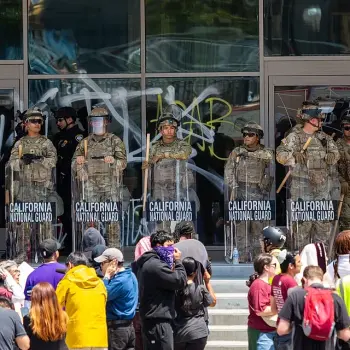We were in the age of the megachurch. We are now in the age of the minichurch.
So says Bob Smietana, writing for the Religious News Service, in his 2021 article Why the minichurch is the latest trend in American religion. He says that half of American congregations have 65 or fewer members. Two-thirds have fewer than 100. The average size of an American congregation is 70.
This “trend” of the minichurch is not by design. Between 2015 and 2020, half of all congregations have declined in attendance by 7% or more. Furthermore, despite the large number of small congregations, the majority of churchgoers attend a congregation of at least 400 people.
One of the sources Smietana uses for his article is the 2020 Faith Communities Today study, a project of a number of religious groups, including the Lutheran Church Missouri Synod. Looking at that report gives us more specifics.
The study estimates that there are between 350,000 and 375,000 congregations in the United States. Only 10% of them have an attendance of 250 or more. And yet 70% of American churchgoers attend a church of that size. Only 14% of churchgoers attend congregations of 100 or fewer.
Many of the minichurches are congregations of Mainline Protestantism, whose numbers have plummeted despite or perhaps because of their embrace of progressive moral and theological beliefs. They have the smallest median size, at 50, a decline of 12.5% since 2015. Evangelical protestants have a median size of 65, having declined only 5.4%. Catholics and Orthodox, with their often sprawling parish system, have a median worship attendance of 400, but this is a decline of 9.11%. (“Median” meaning an equal number below and above that point.)
In addition to the shrunk mainline congregations–many of which still have the enormous buildings of their heyday in the 1960s–tiny churches include the store-front congregations in the big cities, especially popular with Blacks and Hispanics, and the congregations in small towns and rural areas.
The news, however, is not all bad, according to the study. Nearly all congregations, of whatever size, are financially stable. And over a third of the congregations of all sizes, 34%, are growing by 5% or more, and 23% have grown by 25% or more. 64% report little or no conflict in their congregation.
And, most importantly, the “spiritual vitality” of churches of every size has actually risen. In 2000, 43% of respondents said that their congregation was “spiritual vital and alive,” a number that decreased each year, bottoming out at 27% in 2015. But since then, that percentage has risen sharply, with 33% crediting the “spiritual vitality” of their congregation.
The report also cites advantages that smaller congregations have:
The smallest 70% of congregations–those with worship attendance of 100 or less–were characterized as having a high level of member commitment. These faith communities had a greater percentage of member participation in weekly worship. Their participants gave more money per person and were more likely to volunteer. These congregations spent less on staffing costs and gave the highest percentage of their budgets in support of missions and charity. . . .
The larger the congregation gets, and the faster it grows, the greater the decline in per capita giving. Growth and large size also correlate to smaller percentages of the congregation willing to volunteer and a lower overall level of participant commitment generally.
As a veteran of both very large and very small congregations, I have seen this firsthand. More importantly, when we were in a large congregation, we really didn’t know our pastor very well, and he didn’t really know us. Nor did we know very many of our fellow members. Now, in a small rural congregation, we know everybody. There is a much stronger sense of community. We all have to pull together more. And I am much more involved than I was in the big church.
What has been your experience in the different sized congregations?
Photo by form PxHere, Public Domain, CC0.














